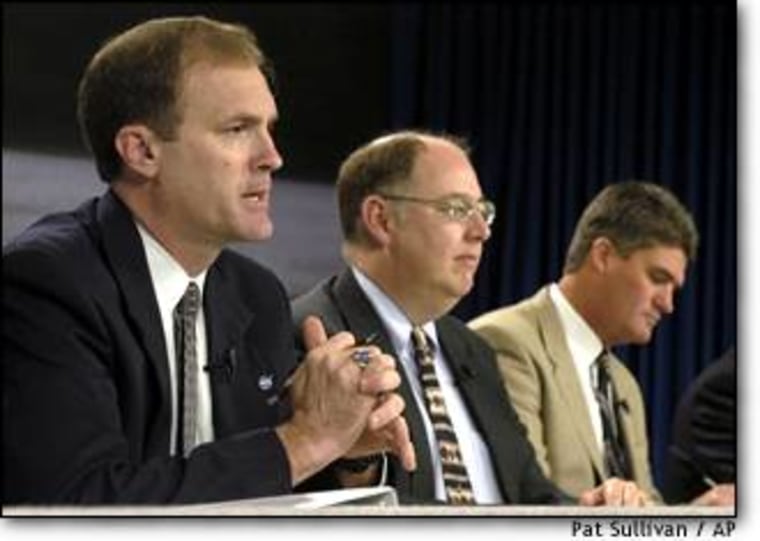NASA is still struggling to develop a tool for inspecting the outside of the space shuttle and a repair kit for gashed wings — hurdles that could prolong the grounding of the fleet since the Columbia disaster. Shuttle program manager Bill Parsons said Tuesday the space agency remains on track for a launch as early as next September or October.
“We have all the confidence in the world we can get there,” Parsons said. But he cautioned: “There are a number of areas out there that could create bumps in the road for us, and we’re going to have to keep a close eye on things.”
Atlantis is in line to fly next, on a trip to the international space station that would be used to test various shuttle-repair methods.
Since the February disaster, NASA has made considerable progress in devising a technique to fix holes in the silica glass fiber tiles that cover much of each shuttle. Spacewalking astronauts would use a caulking gun to inject a salmon-colored, puttylike material into a gap.
It is proving much more difficult, however, to develop a repair kit for the reinforced carbon panels that protect the leading edges of the shuttle wings from the searing heat of re-entry.
A hole in the edge of Columbia’s left wing led to its destruction over Texas; a piece of fuel-tank foam insulation gashed it there during liftoff.
Engineers also are having trouble putting together an extension boom with cameras and laser sensors that could be used by astronauts to inspect the outside of their orbiting ships for damage.
No flights in 2004? ‘That's fine, too'
James Halsell, a shuttle commander who is leading the return-to-flight effort, stressed that safety — and not a schedule — will determine when the next shuttle takes off.
“We’re trying to launch when we can safely, and if that means we launch in September, fine. If it means we don’t launch a flight, any flights, in 2004, that’s fine, too. It will be when it happens,” Halsell said.
Although Columbia accident investigators said the seven astronauts might have survived if their cabin had been stronger and better protected, NASA is not considering a redesign, at least for now, Parsons said.
“There are a number of ways to look at crew survivability, and the best way we can is to make sure that there’s a safe launch and a safe on-orbit and a safe return back to Earth,” he said.
Shuttle mission managers, meanwhile, are holding drills to improve their communication and decision-making. The Columbia Accident Investigation Board blamed the space agency’s broken safety culture, in large part, for the tragedy.
This week, NASA is giving employees time at work to read and discuss the board’s report, which was released in August. Copies were distributed widely throughout the space agency.
Also on Tuesday, NASA named a new Aerospace Safety Advisory Panel and said it would provide stronger, more focused oversight. The entire panel resigned in September after being criticized by Columbia investigators and members of Congress for being ineffective.
The nine new members include Steven Wallace, a member of the Columbia inquiry board and director of accident investigations for the Federal Aviation Administration.
NASA Administrator Sean O’Keefe said the panel’s newly revised charter is more in line with its origins. The panel was initiated by Congress as an independent watchdog following the deadly 1967 Apollo spacecraft fire.
